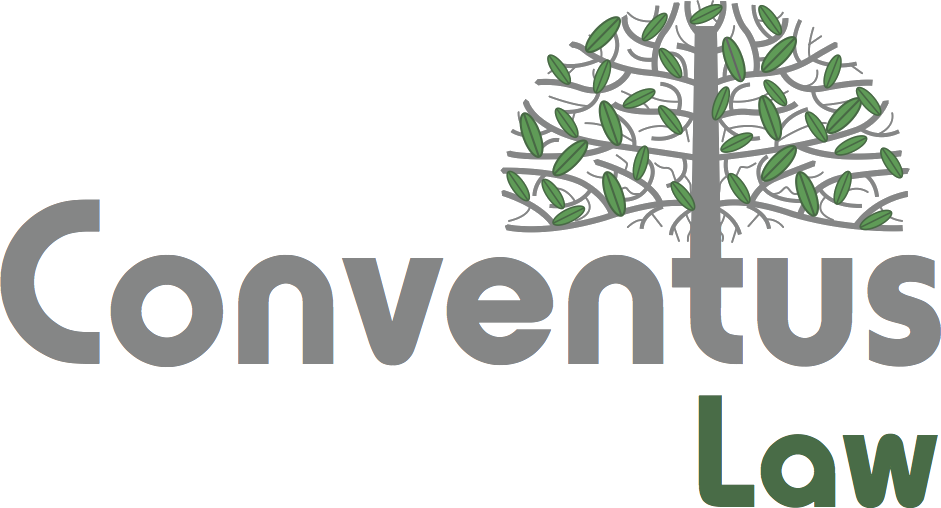Introduction
Artificial intelligence has transformed from a theoretical concept into a fundamental driver of economic growth and innovation across Asia. From autonomous vehicles navigating Singapore’s smart city infrastructure to AI-powered financial services revolutionising banking in Hong Kong, the technology’s rapid integration into critical sectors has created unprecedented opportunities alongside equally significant regulatory challenges.
As AI systems become more sophisticated and pervasive, Asian governments face the complex task of fostering innovation while protecting citizens from potential risks. The stakes are particularly high in a region that accounts for a significant portion of global AI research and development, with countries like China leading in AI patents and Singapore pioneering regulatory sandboxes for emerging technologies.
This article explores the diverse regulatory approaches emerging across Asia, examining how different jurisdictions are balancing the promotion of AI innovation with the need for responsible governance, and identifying the key challenges that lie ahead in this rapidly evolving landscape.
AI Regulation in Asia: Where Do We Stand?
Balancing Progress and Governance
Asian countries are navigating a delicate equilibrium between maintaining their competitive edge in AI development and implementing robust governance frameworks. This balance reflects a broader understanding that overly restrictive regulations could stifle innovation, while insufficient oversight might lead to ethical breaches, privacy violations, or economic disruption.
The region’s approach is characterised by pragmatic experimentation, with many countries adopting iterative regulatory strategies that can adapt to technological developments. This flexibility has enabled Asian jurisdictions to remain at the forefront of AI adoption while gradually building comprehensive legal frameworks.
Key Regulatory Developments by Region
Mainland China
China has emerged as one of the most proactive jurisdictions in developing comprehensive AI regulation. The country’s approach centres on maintaining national security while promoting technological advancement through state-guided innovation. Recent legislative developments include the Algorithm Recommendation Management Provisions, which came into effect in 2022, requiring companies to disclose algorithmic logic and provide users with options to turn off algorithmic recommendations.
The Draft Measures for Deep Synthesis Provisions represent another significant step, focusing on AI-generated content and requiring clear labelling of synthetic media. These regulations reflect China’s broader strategy of maintaining strict oversight over information flows while encouraging technological development within defined parameters. The implications extend beyond domestic markets, as international companies operating in China must comply with these evolving requirements, potentially influencing global AI governance standards. The measures have been further enhanced in 2023 and 2025 as the Measures for the Labelling of Artificial Intelligence-Generated and Synthetic Content.
Hong Kong
Hong Kong’s regulatory approach reflects its position as an international financial hub with strong rule-of-law traditions. The jurisdiction has primarily relied on existing laws and guidelines to govern AI applications, with the Office of the Privacy Commissioner for Personal Data [PCPD] playing a crucial role in AI governance through privacy protection frameworks.
The Privacy Commissioner has issued guidance on AI and personal data protection, emphasising the importance of data minimisation, purpose limitation, and algorithmic transparency. Hong Kong’s strategy focuses on leveraging existing legal infrastructure while gradually developing specialised AI governance mechanisms, particularly in the financial services sector where AI adoption is most advanced.
Singapore
Singapore has positioned itself as a global leader in AI governance through its comprehensive Model AI Governance Framework. This voluntary framework, first introduced in 2020 and updated regularly, provides practical guidance for organisations deploying AI systems across various sectors.
The framework emphasises self-regulation and industry best practices, offering detailed guidance on AI governance structures, risk management, and stakeholder engagement. Singapore’s approach also includes the establishment of AI testing facilities and regulatory sandboxes that allow companies to experiment with AI applications under relaxed regulatory conditions. This strategy has attracted significant international investment and positioned Singapore as a preferred location for AI research and development in Southeast Asia.
Japan
Japan’s approach to AI regulation emphasises non-binding guidelines and ethical principles, reflecting the country’s preference for consensus-building and gradual policy development. The government has established the AI Strategy Council and released comprehensive AI governance guidelines that focus on human-centric AI principles.
Recent initiatives include the development of AI ethics guidelines for specific sectors, particularly healthcare and automotive industries. Japan’s strategy also emphasises international cooperation, with the country playing a leading role in G20 discussions on AI governance and actively participating in global standard-setting initiatives. The government has announced plans to establish an AI safety institute, demonstrating commitment to strengthening oversight capabilities while maintaining support for innovation.
South Korea
South Korea’s proposed Act on Promotion of the AI Industry [scheduled for 2026) represents one of the most comprehensive legislative frameworks in Asia. The proposed legislation aims to establish clear rules for AI development, deployment, and governance while providing support for industry growth through tax incentives and research funding.
The act includes provisions for AI impact assessments, algorithmic auditing requirements, and mandatory disclosure of AI system capabilities and limitations. South Korea’s approach reflects a balance between regulatory certainty and innovation support, with the government actively consulting industry stakeholders to ensure practical implementation of regulatory requirements.
Taiwan
Taiwan’s draft Basic Law for Development of Artificial Intelligence demonstrates the jurisdiction’s commitment to establishing a comprehensive regulatory foundation for AI governance. The proposed legislation focuses on promoting AI development while ensuring ethical deployment and protecting individual rights.
The current legislative process involves extensive consultation with technology companies, academic institutions, and civil society organisations. Expected outcomes include the establishment of a national AI development strategy, clear guidelines for AI applications in government services, and frameworks for international cooperation on AI governance. Taiwan’s approach emphasises transparency and democratic participation in regulatory development, reflecting broader values around technological governance.
Comparing Regulatory Blueprints Across Asia
The Hard Law vs. Soft Law Dilemma
Asian jurisdictions have adopted markedly different approaches to AI regulation, creating a spectrum from strict enforcement mechanisms to adaptive voluntary frameworks. China represents the hard law approach, with detailed legal requirements backed by significant enforcement powers and penalties. This strategy provides regulatory certainty but may limit flexibility as technology evolves.
In contrast, Singapore and several ASEAN countries have embraced soft law approaches, relying on voluntary guidelines, industry self-regulation, and collaborative governance mechanisms. These frameworks offer greater adaptability and reduce compliance costs but may struggle to address serious risks or ensure consistent implementation across different organisations.
The choice between hard and soft law approaches often reflects broader governance philosophies and economic strategies. Countries with strong state capacity and centralised decision-making tend toward harder regulatory approaches, while those emphasising market mechanisms and international competitiveness often prefer softer frameworks
Custom Regulations for Every Sector
AI regulations across Asia increasingly reflect sector-specific requirements and risk profiles. In healthcare, countries like Japan and Singapore have developed specialised guidelines addressing medical AI applications, clinical validation requirements, and patient safety considerations. These sector-specific approaches recognise that AI applications in healthcare carry different risks and require different oversight mechanisms compared to AI in entertainment or marketing.
Financial services represent another area of intensive regulatory focus, with Hong Kong and Singapore leading in developing AI governance frameworks for banking, insurance, and investment services. These regulations often build on existing financial regulatory infrastructure while addressing new challenges posed by algorithmic decision-making in credit scoring, fraud detection, and automated trading.
The technology sector faces broader regulatory requirements covering everything from data protection to competition policy. Countries are increasingly recognising that effective AI governance requires coordination across multiple regulatory domains rather than standalone AI-specific legislation.
Lessons from Cybersecurity
Asia’s approach to AI governance draws heavily from established cybersecurity regulatory strategies. Many countries have adapted cybersecurity frameworks to address AI-specific risks, including adversarial attacks on AI systems, data poisoning, and model theft. This approach leverages existing regulatory expertise while addressing the unique challenges posed by AI technologies.
Cybersecurity experience has also informed approaches to international cooperation and information sharing. Countries that have developed effective cybersecurity incident response mechanisms are applying similar principles to AI governance, including establishment of AI incident reporting systems and cross-border cooperation agreements.
Facing the Real Challenges of AI Regulation
Compliance Issues
The rapid pace of AI technological advancement creates significant challenges for regulatory compliance. Traditional regulatory frameworks often assume relatively stable technologies that change incrementally over time. AI systems, however, can evolve continuously through machine learning processes, making it difficult to ensure ongoing compliance with static regulatory requirements.
Companies struggle to implement compliance programs that can adapt to both technological evolution and changing regulatory expectations. This challenge is particularly acute for smaller organisations that lack dedicated compliance resources but still deploy AI systems in their operations. The result is often a compliance gap where organisations may be technically non-compliant despite good-faith efforts to follow regulatory guidance.
Regulatory authorities also face challenges in developing enforcement mechanisms that can keep pace with technological change. Traditional approaches to regulatory oversight may be inadequate for AI systems that operate autonomously and make decisions in real-time without human intervention.
Ethical Considerations
AI systems raise fundamental questions about bias, accountability, and transparency that existing legal frameworks struggle to address adequately. Algorithmic bias can perpetuate or amplify existing social inequalities, but identifying and remedying such bias requires technical expertise that many regulatory authorities lack.
Accountability presents another significant challenge, particularly for AI systems that make autonomous decisions with significant consequences for individuals or society. Traditional legal concepts of responsibility and liability may be inadequate when applied to complex AI systems that operate through machine learning processes that even their developers may not fully understand.
Transparency requirements must balance the need for explainable AI with legitimate concerns about protecting intellectual property and trade secrets. This balance is particularly challenging in competitive markets where algorithmic transparency could undermine commercial advantages while opacity may harm individual rights and democratic accountability.
Who Shapes AI Law? The Role of Key Stakeholders
Governments: Architects of AI Regulation
Government bodies across Asia play the central role in establishing AI regulatory frameworks, but their approaches vary significantly based on institutional capacity, economic priorities, and governance philosophies. Regulatory agencies must balance multiple objectives including promoting innovation, protecting citizens, maintaining national security, and ensuring international competitiveness.
The effectiveness of government regulation depends heavily on technical expertise within regulatory agencies. Many Asian governments are investing in AI literacy programmes for regulators and establishing specialised units with technical capabilities to assess AI systems and develop appropriate oversight mechanisms.
Enforcement remains a significant challenge, particularly for complex AI systems that operate across multiple jurisdictions or sectors. Governments are increasingly recognising the need for coordination between different regulatory agencies and international cooperation to address cross-border AI governance challenges.
Businesses: Steering Through Compliance Complexity
Companies deploying AI systems face the challenge of navigating multiple, often overlapping regulatory frameworks while maintaining competitive advantage through AI innovation. Proactive governance strategies are becoming essential for businesses that want to avoid regulatory sanctions and maintain stakeholder trust.
Many companies are establishing AI ethics committees, implementing algorithmic auditing processes, and developing internal governance frameworks that exceed minimum regulatory requirements. This approach reflects recognition that regulatory compliance alone may not be sufficient to address all stakeholder concerns about AI deployment.
The complexity of AI regulation creates particular challenges for multinational companies that must comply with different requirements across multiple jurisdictions. Harmonisation of regulatory approaches would reduce compliance costs, but achieving such harmonisation requires significant international cooperation.
Legal Professionals: Tackling Emerging AI Challenges
The legal profession is experiencing significant transformation as AI technologies create new areas of practice while also providing tools that can enhance legal service delivery. Lawyers must develop expertise in AI governance, algorithmic auditing, and technology risk assessment to serve clients effectively in the AI era.
AI is creating new categories of legal work, including AI contract negotiation, algorithmic bias assessment, and AI-related dispute resolution. At the same time, AI tools are automating certain traditional legal tasks, requiring lawyers to adapt their service models and develop new competencies.
Legal education and continuing professional development programs are evolving to address these changes, but the pace of technological development often outstrips the ability of educational institutions to adapt their curricula.
The Future of AI Regulation in Asia
Looking Ahead to 2025: Key Predictions
The AI regulatory landscape in Asia is expected to become significantly more sophisticated and comprehensive throughout 2025 into 2026. Several trends are likely to shape this evolution, including increased focus on sector-specific regulation, greater emphasis on international cooperation, and development of more sophisticated enforcement mechanisms.
Regulatory sandboxes and experimental approaches are likely to become more common as governments seek to balance innovation promotion with risk management. These mechanisms allow regulators to gain practical experience with AI governance while providing companies with opportunities to test new technologies under relaxed regulatory conditions.
The role of technical standards and certification schemes is expected to expand, with industry bodies and international organisations developing more detailed specifications for AI system design, testing, and deployment. These standards may become increasingly important for demonstrating regulatory compliance and building stakeholder trust.
Towards a Unified Approach: Harmonising AI Laws
Regional harmonisation of AI governance frameworks presents both significant opportunities and substantial challenges. Harmonised approaches could reduce compliance costs for multinational companies, facilitate cross-border AI applications, and strengthen collective responses to AI-related risks.
However, achieving this requires overcoming significant differences in legal systems, governance philosophies, and economic priorities. Countries may be reluctant to compromise their competitive advantages or subordinate domestic policy preferences to international coordination.
Practical steps might include development of common technical standards, mutual recognition agreements for AI certification schemes, and regular information sharing on regulatory experiences and best practices. These incremental approaches may be more achievable than comprehensive regulatory harmonisation in the near term.
Conclusion
The evolution of AI law across Asia reflects the region’s dynamic approach to technological governance, balancing innovation promotion with responsible oversight in ways that reflect diverse legal traditions, economic priorities, and social values. From China’s comprehensive regulatory framework to Singapore’s voluntary governance models, Asian jurisdictions are pioneering different approaches to AI regulation that may influence global standards for years to come.
The regulatory landscape continues to evolve rapidly as governments gain experience with AI governance and technology continues to advance. Success in this environment requires ongoing adaptation, stakeholder engagement, and international cooperation to address challenges that transcend national boundaries.
As AI becomes increasingly central to economic competitiveness and social welfare, the importance of effective regulatory frameworks will only grow. Organisations operating in this space must stay informed about regulatory developments and invest in governance capabilities that can adapt to changing requirements while supporting responsible AI innovation.
For businesses navigating this complex regulatory environment, proactive engagement with legal professionals who understand both technology and regulatory requirements is essential. KorumLegal’s expertise in AI and regulation can help your organisation develop robust governance frameworks that ensure compliance while supporting innovation in Asia’s dynamic AI landscape. Get in touch with KorumLegal today to future-proof your operations and thrive in the evolving world of AI regulation.
Access the original content here

For further information, please contact:
Natasha Norton, KorumLegal
Natasha.Norton@korumlegal.com



